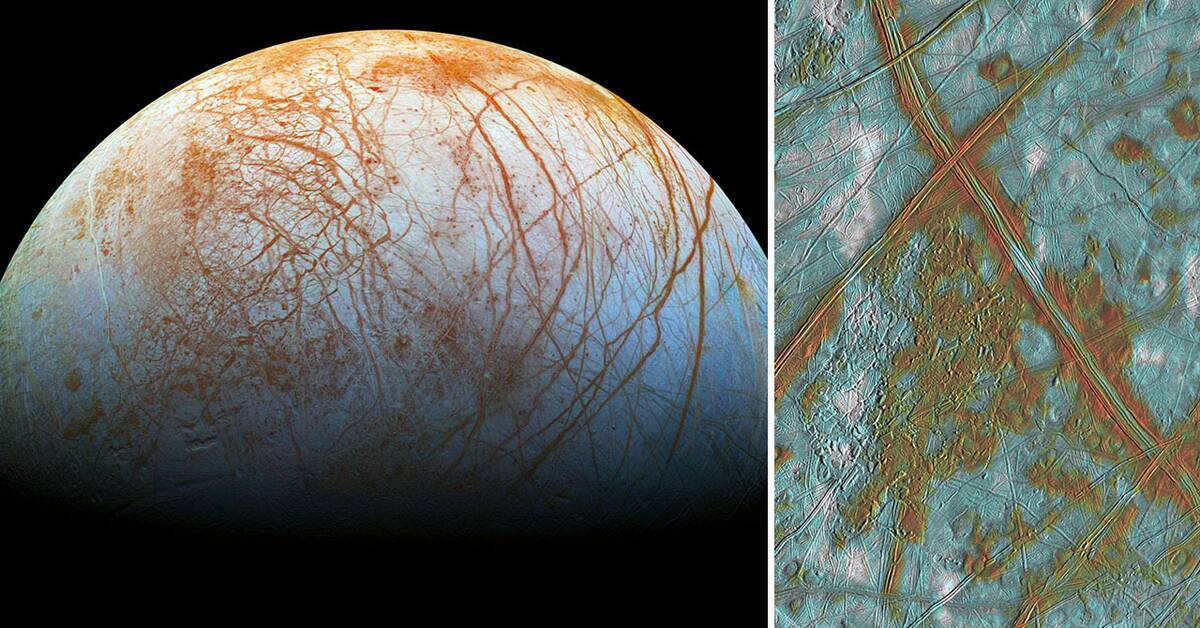Jupiter's moon Europa is far out in the solar system where the sun's rays do not heat as much as here on earth.
On the surface it is around minus 200 degrees and it is covered by a 2 up to 300 kilometers thick ice cover.
Astronomers today have strong suspicions that there is a huge ocean filled with salt water under the thick ice.
This makes Europe the leading candidate to find extraterrestrial life.
But the ice barrier makes it impossible for us to examine the water.
Small organisms
A discovery by American physicists now makes it easier to find out if small aquatic organisms really live there.
It is Europe's distinctive appearance that can guide us to where to look.
Close observations of the Galileo space probe have shown that the moon's surface is filled with cracks and kilometer-long double ridges of ice.
It's like two ridges running parallel to each other.
Finds in Greenland
Geophysicists at Stanford University discovered that there are similar double locks in the glacier in northwest Greenland.
Radar surveys showed that under the double locks were small pockets of liquid water.
Together, they form a geological formation formed by the ice melting and freezing everywhere else.
The discovery is published in Nature communication.
- It is a very interesting approach to do research on Earth and then compare with Europe, says Lorenz Roth who is an astronomer at the Royal Institute of Technology.
Running water under the ice
If the double locks in Europe have been formed in the same way as in Greenland, it would mean that there are pockets of running water relatively close that are more accessible for exploration in the future than the great global ocean.
- We can look at the outside to find out what is on the inside.
But to find life forms in the water pockets, there must be some kind of exchange with the ocean.
And we do not yet know that, says Lorenz Roth.
Because it is in the underground ocean that it is suspected that life could have a chance to develop.
It is located next to the mountain's mountainous mantle and there it is believed that there are hyperthermic springs.
Hot water and minerals flow out there - which are nutrients for simple organisms.
Life on earth probably began near such a hyperthermic source at the bottom of the ocean.
In the next few years, both Nasa and Esa plan to send their own space probe to investigate with radar what is under the ice in Europe.

